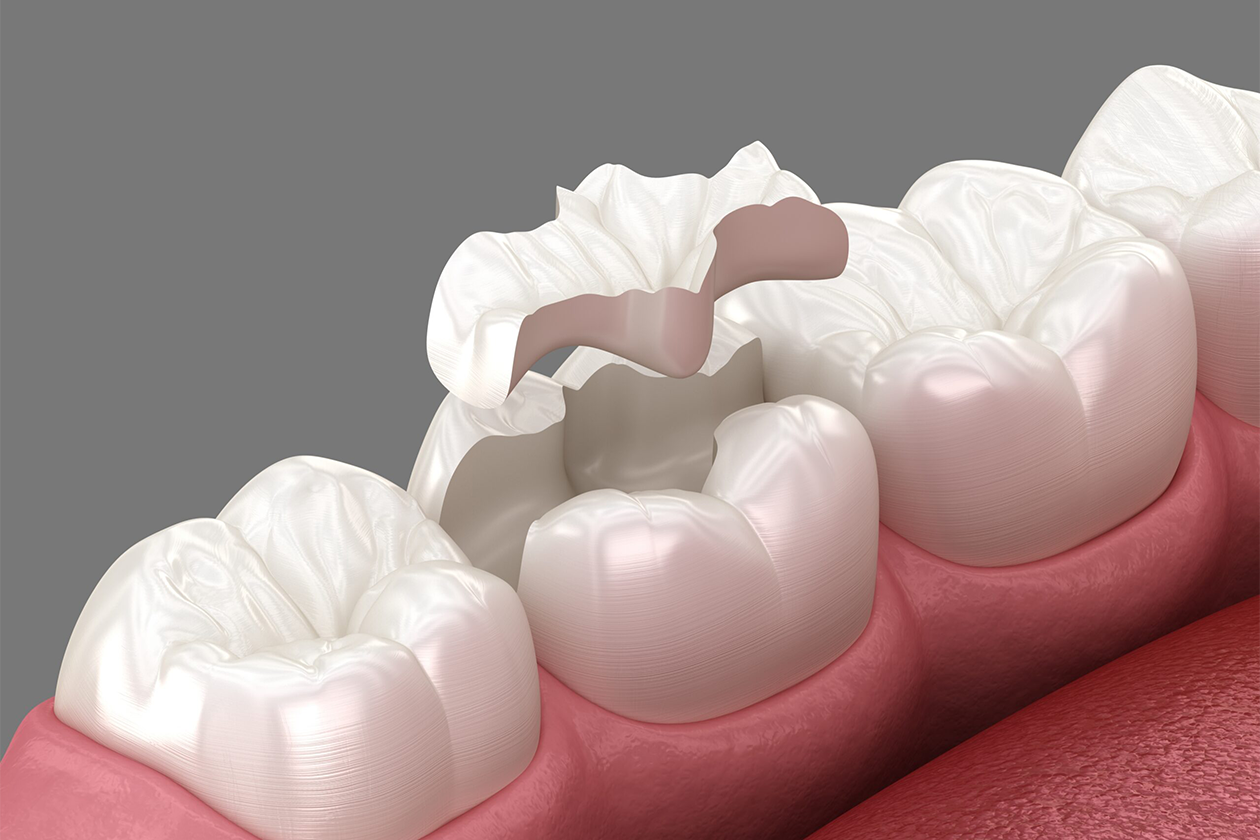
The Perfect Middle Ground for Tooth Restoration
If you have a cavity or damage that’s too extensive for a filling but not quite large enough for a full crown, an inlay or onlay could be the ideal solution. Inlays are designed to fix damage within the cusps of a tooth, while onlays cover a larger area, extending beyond the cusps for more extensive repair. Both options offer a conservative approach to restoring your tooth.
How are inlays and onlays applied?
The process for inlays and onlays typically involves one or two appointments. During the first visit, your dentist will remove any old fillings or damaged areas and prepare the tooth. An impression will be taken and sent to a lab for fabrication, and a temporary sealant will be applied.
At the second appointment, the dentist will remove the temporary sealant, check the fit of the inlay or onlay, and make any necessary adjustments. Once the fit is perfect, the inlay or onlay will be secured with a strong resin and polished for a smooth finish.
The Benefits of Tooth-Colored Fillings
Compared to traditional fillings, inlays and onlays are a superior option for preserving the strength of natural teeth. When bonded with strong resins, they can enhance the tooth’s strength by up to 75 percent. This increased durability allows inlays and onlays to last between 10 and 30 years. Onlays, in particular, are ideal for cases where the damage is extensive but does not require a full dental crown.
New patients and emergency appointments welcome


